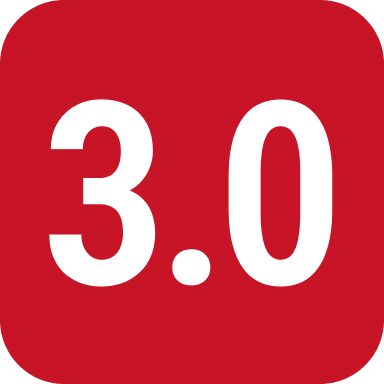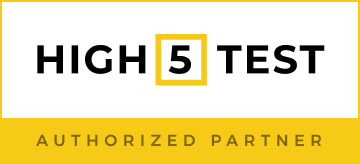Both HIGH5 strengths test and Student’s Self-assessment are assessments that helped millions of people be at their best. So what sets them apart?
HIGH5
Student Self-assessment
What it measures
Strengths
Overal
Time to complete
15 min
30 min
Development insights
What to watch out for
Career applications
Dedicated team report
Interpersonal analytics
360-degree peer review
Progress tracking

Student self-assessment tests can help you understand how well you know a subject. They can help you figure out what you need to study more. They can also help you assess your strengths and weaknesses in different areas.
Self-assessment tests are an important part of any student’s learning process, as they allow students to become aware of their progress and better understand their performance.
Self-assessment tests help students learn about themselves and their progress. They help students understand what they know, need to study more, and their strengths and weaknesses. With self-assessment tests, students can become aware of how well they do in school and take ownership of their learning.
This article will discuss the importance of student self-assessment tests and how to use them effectively. We will also provide tips on creating a successful self-assessment test for your students.
Taking a Student Self-Assessment Test
A student self-assessment test helps determine how well you know a subject. It can also help you see what parts of the issue need improvement.
It is an important part of learning in school because it helps students understand their progress and become aware of their strengths and weaknesses.
To do a self-assessment test, think about what topics or questions in the subject are hard for you, then answer those questions to help you understand your learning better.

Here are some tips for completing self-assessment exercises effectively:
- Prepare: Before attempting any self-assessment exercise, students must familiarize themselves with the material. This can help them identify what areas to focus on and which questions they may have difficulty answering.
- Set a Timer: Allocating a certain amount of time for each question can help ensure the student can answer all questions thoroughly without feeling overwhelmed or rushed.
- Take Breaks: Regular breaks throughout the assessment can help keep students from becoming too tired or frustrated while working on their evaluation.
- Answer Questions Carefully: Self-assessment tests measure a student’s understanding of a subject, so questions must be answered completely to get accurate results from the trial.
- Review Results: Once all the questions have been completed, review your answers carefully before submitting them. This will allow you to check for errors that need correcting or gaps in your understanding that require further study or practice.
Using these tips to help guide their self-assessment exercises, students can get the most accurate results from their self-evaluation and use that feedback to improve their study habits and overall academic performance.
Interpreting Student Self-Assessment Results
Educators can use student self-assessment results to understand how well a student is grasping the material and what areas need improvement. By interpreting the results correctly, teachers can provide personalized instruction that helps students reach their full potential.
When evaluating self-assessment results, educators should consider both individual student performance and collective patterns. Individual performance can be assessed by looking at the student’s answers against a benchmark for correct responses or on a scale of ‘minimum mastery’ to ‘excellent understanding’.
Collectively, it can be useful to compare the results of multiple students to identify common misunderstandings or strengths across a group.
In addition to providing insights on performance, self-assessment results can help teachers adjust their teaching methods and strategies. For example, suppose a group of students score poorly on certain topics but do better when given more visual learning materials. In that case, an educator may want to switch things up and introduce more visual elements into their lessons.
On the other hand, if most students consistently score highly on certain topics, an educator may want to adjust the course content and focus more heavily on more challenging material.
Providing constructive feedback and guidance based on self-assessment results is essential to helping students reach their academic goals.

By offering personalized advice and identifying areas where improvement is needed, teachers can support their students in ways tailored to their strengths and weaknesses. This helps ensure the student receives the most beneficial instruction possible and increases their success rate.
Constructive feedback should be specific, encouraging, and actionable. Educators should focus on providing improvement solutions rather than simply pointing out mistakes or shortcomings.
Rather than simply telling a student that they did not answer a question correctly, it would be more helpful to identify what concept the student seemed to struggle with and provide resources or strategies that could help them better understand the material.
In addition, educators should also guide how to stay motivated when faced with challenging topics or difficult tasks. Encouraging statements such as “You can do it” or “Try again” can help build confidence in students’ abilities and keep them from giving up too soon. Consistently providing positive reinforcement for the effort put forth can also lead to improved academic performance over time.
Overall, by offering constructive feedback and guidance based on self-assessment results, teachers can play an important role in helping students reach their full potential. By recognizing each student’s strengths and weaknesses and being willing to adjust teaching methods accordingly, educators can ensure that the necessary support is provided for greater success in the classroom.
Benefits of Taking the Student Self-Assessment Test
Student self-assessment is a powerful tool to help students become more self-aware and improve their learning outcomes. Self-assessment allows students to reflect on what they have learned and better understand their strengths and weaknesses.
This can motivate them to work harder and strive for higher academic achievement. Additionally, by taking part in the assessment process, students can develop critical thinking and problem-solving skills, which will benefit all aspects of life beyond the classroom.
Self-assessment encourages individual responsibility, which is essential for long-term learning success. It allows students to take ownership of their education, assess their progress, and actively participate in setting goals for improvement.
By becoming aware of areas lacking or needing additional support, they are better equipped to identify strategies that will help them succeed.
Furthermore, student self-assessment allows educators to tailor instruction more effectively according to each student’s needs. By evaluating work from multiple perspectives-including self-reflection-teachers can gain valuable insight into student progress and adjust accordingly.
This can lead to increased engagement in class activities and improved understanding of material amongst students.
Self-assessment is an effective way to promote metacognitive skills and self-regulated learning in students. Metacognition, or thinking about one’s thoughts, is essential for students to develop greater self-awareness and understanding of their strengths and weaknesses.
Through self-assessment, students can learn how to monitor their progress objectively, determine where they need additional support, and set goals for improvement. This encourages them to think critically about their work and think ahead when making decisions.
Additionally, self-assessment helps students learn how to problem solve more effectively by enabling them to identify solutions that will help them reach their desired outcome.
This process of self-reflection allows students to become more independent learners as they take responsibility for their academic success by making informed decisions for themselves rather than relying on external sources.
This kind of self-regulation encourages increased motivation as students feel empowered and are rewarded for taking ownership of their education.
Overall, student self-assessment is a beneficial tool that promotes metacognitive skills and self-regulated learning in the classroom setting.
It enables students to take ownership of their education, assess progress objectively, identify areas where they need additional support, set achievable goals for improvement, and become more independent learners.
By fostering these qualities in students early on, educators can better prepare them to achieve long-term success inside and outside the classroom.
How Does This Student Self-Assessment Work?
Student self-assessment involves taking the time to reflect on their work and identify areas they need to improve. By engaging in this practice, students can better understand what is expected from them and how they can best reach their goals.
The process typically begins with the teacher setting clear expectations for the task. This may include criteria for success, subject knowledge objectives, or specific skills that need to be developed.
With these parameters established, the student can then use the information provided by the teacher as guidelines when evaluating their performance.
This assessment should involve reflection on three key elements: strengths and weaknesses, progress toward learning outcomes, and strategies needed for improvement.
When reflecting on strengths and weaknesses, students should consider the quality of their work and identify areas where they can build on their successes.
When assessing progress toward learning outcomes, students should note gaps between what they know and what they still need to learn.
Finally, when reflecting on strategies for improvement, students should think about how they can best use the resources available (e.g., class notes, teacher feedback) to improve their performance in the future.
By engaging in self-assessment regularly, students become more aware of how well they meet expectations and how to approach tasks better and achieve goals.
This helps them develop important skills such as problem-solving and communication, which will be beneficial not just during school but also in life after school.
How Accurate Is The Student's Self-Assessment Test?
Student self-assessment is an effective tool for assessing students’ educational progress and understanding. Self-assessment allows students to receive feedback on their performance and gain insight into areas they need to improve.
By taking part in self-assessment, students cancan monitor their progress and identify which skills they need to develop or strengthen. Self-assessment also helps students become more independent, better organized, and self-directed learners.
Self-assessments can take many forms, such as quizzes, tests, rubrics, open-ended questions, and presentations. Studies have indicated that these assessments often accurately measure student learning outcomes.
Past research found that when teachers administered traditional tests and self-assessments, the results for both examinations were similar in accuracy for measuring student learning outcomes. Similarly, other studies have suggested a positive correlation between student achievement and level of engagement with self-assessment activities.
The most accurate form of self-assessment is perhaps reflective writing assignments or journals, allowing students to review their work objectively and reflectively to understand better their strengths and weaknesses.
These kinds of reflective writings can help build a deeper understanding of the material being studied and promote metacognitive thought processes, such as thinking about one’s thoughts.
Additionally, these assignments allow teachers to provide effective formative feedback, which can further improve the overall quality of a student’s learning experience.
Evidence strongly suggests that using self-assessment accurately measures student learning outcomes. This type of assessment helps foster independence, critical thinking skills, reflection, and improved performance in students while providing valuable feedback from their teacher about their academic progress.
Strategies for Implementing Results from Student Self-Assessment
One practical strategy to integrate student self-assessment in the classroom is by providing students with regular opportunities to reflect on their work and learning progress.
This can be done through metacognitive activities such as journaling or writing reflections on assignments and projects, during which students can evaluate their strengths and weaknesses and think of ways to improve.
Teachers can also facilitate group discussions or presentations where students discuss their learning journey collaboratively, enabling them to gain new insights and perspectives from each other’s experiences.
Additionally, teachers can create rubrics or checklists that explicitly highlight the criteria for successful task completion so that students know the expectations beforehand and can measure their performance against them.
These rubrics can help students break down complex tasks into smaller components for easier assessment while also helping them understand how their work contributes to meeting larger outcomes.
Providing meaningful feedback is likely one of the most important strategies for empowering student self-assessment. Instead of focusing only on mistakes or areas for improvement, teachers should give detailed, constructive feedback that outlines what was done well and what needs revision based on the rubric provided.
This way, students learn from past mistakes and become more confident about their abilities as they develop better critical thinking skills.
One effective method for facilitating student self-evaluation is through quizzes and assessments that require students to reflect on their knowledge of a subject or skill. This can be online multiple-choice tests, essay assignments, presentations, simulations, case studies, and other activities that challenge students to think critically about what they have learned.
For example, teachers could ask questions that require students to explain how certain concepts are related or how they would respond to a particular situation.
This type of evaluation encourages students to think more deeply about the material and enables them to identify any areas where they need additional practice or support.
Another effective tool for facilitating student self-evaluation is peer feedback. Through this process, students can review each other’s work and provide constructive suggestions for improvement.
This type of evaluation allows students to gain valuable insights from their peers, enabling them to practice providing meaningful feedback. Additionally, it helps them develop their critical thinking skills as they evaluate the work of others about a specific set of criteria or standards.
Rubrics are also useful for helping students evaluate their work and progress. Headers allow teachers to communicate expectations before any assessment activity occurs so that students know exactly what qualifies as successful task completion.
At the same time, rubrics can be broken down into separate components such as accuracy, depth of understanding, creativity, and application so that students can see exactly which areas need improvement to succeed.
Disclaimer: All trademarks mentioned on this page or any other page on the StrengthsTest.com website are the property of their respective owners, who may or may not be affiliated with HIGH5 Test. The information presented about the companies and their services is for informational purposes only and should not be construed as endorsements or criticisms. Displayed information is collected from public sources and, therefore, is subject to a degree of error where any updates or changes may not be immediately reflected. Please contact the editorial team if any of the provided information needs correction.


